-
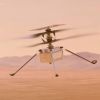 +22 +2
+22 +2NASA makes contact with Mars helicopter after long silence | Digital Trends
NASA has restored contact with its Mars helicopter after 63 days of silence. The communications dropout, however, wasn't unexpected.
-
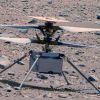 +20 +3
+20 +3Ingenuity helicopter phones home from Mars after 63-day silence
After 63 days of silence, the Mars Ingenuity helicopter is talking again. The little chopper took to the Martian skies on April 26 for its 52nd flight but lost contact with mission controllers before landing — creating a monthslong communications blackout.
-
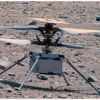 +2 +1
+2 +1NASA Re-Establishes Contact With Mars Ingenuity Helicopter
Washington: The official mission logbook now lists the Ingenuity Mars Helicopter's 52nd flight as a success. The trip took place on April 26 but mission controllers at NASA's Jet Propulsion Laboratory in Southern California lost communication with the chopper as it dropped towards the Mars surface for landing.
-
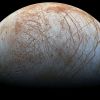 +25 +3
+25 +3NASA to develop oxygen, water on the moon within the next decade
NASA is looking to develop resources on the moon that initially include oxygen and water, and eventually may expand to iron and rare earths, and has already taken steps toward excavating moon soil in 2032, a scientist said on Wednesday.
-
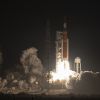 +18 +5
+18 +5NASA aims to perform lunar mining trial within 10 years
NASA's Artemis missions and its upcoming lunar Gateway station project are part of its plans to establish a permanent presence on the Moon. Key to that will be the extraction of resources from the lunar surface, and NASA has already taken important steps toward mining moon soil by 2032, a scientist said today, June 28, according to a Reuters report.
-
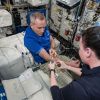 +3 +1
+3 +1Why do some people get rashes in space? There's a clue in astronaut blood
A new study of astronaut blood finds that space travel reduces the expression of 100 genes related to the immune system.
-
 +25 +6
+25 +6NASA is recycling 98 percent of astronaut pee and sweat on the ISS into drinkable water | Engadget
This week, NASA revealed that the International Space Station’s Environmental Control and Life Support System (ECLSS) is recycling 98 percent of all water astronauts bring aboard the station..
-
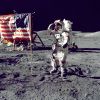 +20 +3
+20 +3NASA claims that life can exist on the Moon. It is reportedly not unrealistic.
The Space website brings news about what scientists will be investigating during the upcoming journey to the Moon. NASA. According to these findings, certain forms of life could potentially sustain themselves in the lunar conditions. One of the scientists, named Prabal Saxena, provides detailed explanations.
-
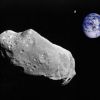 +19 +5
+19 +5Titanic asteroid the size of 84 orcas to pass Earth on Monday
A massive asteroid the size of 84 orcas is set to pass by the Earth on Monday, June 12, according to NASA's asteroid tracker. The asteroid in question has been designated 488453 (1994 XD), according to the Center for Near-Earth Object Studies (CNEOS) at NASA's Jet Propulsion Laboratory (JPL). Despite the initials, it has nothing to do with the XD emoticon some older users of SMS and instant messaging may recognize.
-
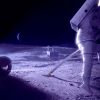 +15 +3
+15 +3NASA Says There May Be Life on the Moon After All
NASA researchers say Moon astronauts should consider that microbial life could survive in shadowed niches near the south pole.
-
 +18 +3
+18 +3Boeing sued for allegedly stealing IP, counterfeiting tools used on NASA projects
Wilson Aerospace, a family-run tools company based in Colorado, is suing Boeing for a wide range of claims concerning allegedly stolen intellectual property.
-
 +24 +4
+24 +4NASA publishes long-awaited report into UFOs and alien activity
NASA has held its first public meeting on the long-awaited report into UFOs. Last year, this new study was launched to investigate reports of UAP (unexplained anomalous phenomena) and for the first time the space agency has made the latest findings public.
-
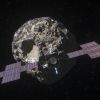 +14 +5
+14 +5Game on—the most metal of asteroid missions is back on the menu
One year after NASA announced an indefinite delay of a much-anticipated mission to visit a metal-rich asteroid, the agency said Monday that the Psyche spacecraft is back on track. The Psyche mission is now scheduled to launch in four months on a Falcon Heavy rocket, and everyone involved in the project feels good about that date.
-
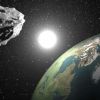 +26 +11
+26 +11New 'quasi-moon' discovered near Earth has been travelling alongside our planet since 100 BC
Astronomers recently identified asteroid 2023 FW13 as a quasi-moon, a space rock orbiting the sun nearly in tandem with Earth.
-
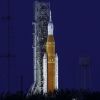 +24 +5
+24 +5NASA's Artemis moon rocket will cost $6 billion more than planned: report
The Space Launch System's booster and engine are now projected to cost at least $13.1 billion over 25 years.
-
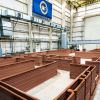 +3 +1
+3 +1How NASA Plans to Melt the Moon—and Build on Mars
Scientists are testing ways to construct buildings on Mars and the moon without hauling materials from Earth. One possible solution: 3D printed melted regolith.
-
 +25 +5
+25 +5This Volcano-Covered Planet May Be Habitable to Alien Life
At first glance, LP 791-18 d seems like a lively place. If new findings from NASA researchers hold up, the Earth-sized exoplanet orbiting a star 90 light-years away from us is teeming with active volcanoes all over its surface. Interesting, sure—but clearly no place for life to thrive, right?
-
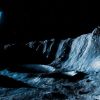 +20 +1
+20 +1Can NASA's Artemis moon missions count on using lunar water ice?
We are on the cusp of learning far more about the projected icy situation of the moon's permanently shadowed regions, or PSRs. Multiple nations are eying the moon's south pole with research teams plotting out how and where to explore the bottoms of the sun-shy features.
-
 +4 +1
+4 +1NASA launches two satellites to study tropical storms
Rocket Lab launched two toaster-size satellites for NASA on Sunday, the first of four "cubesats" designed to provide hourly updates of typhoon and hurricane development in a bid to improve forecasting and provide new insights into how tropical storms evolve and intensify.
-
 +19 +2
+19 +2NASA Scientists reveal largest Uranus moons may contain oceans
A recent analysis from NASA's Voyage spacecraft has led scientists to conclude that four of Uranus' largest moons contain water. These moons are believed to have an ocean layer that exists between the icy crust and core, and they could be miles deep. Uranus has at least 27 moons, five of which were large: Ariel, Umbriel, Titania, Oberon, and Miranda. According to recent peer-reviewed study from NASA scientists, the four largest are believed to have the ability to retain heat caused by radioactive decay.
Submit a link
Start a discussion




















